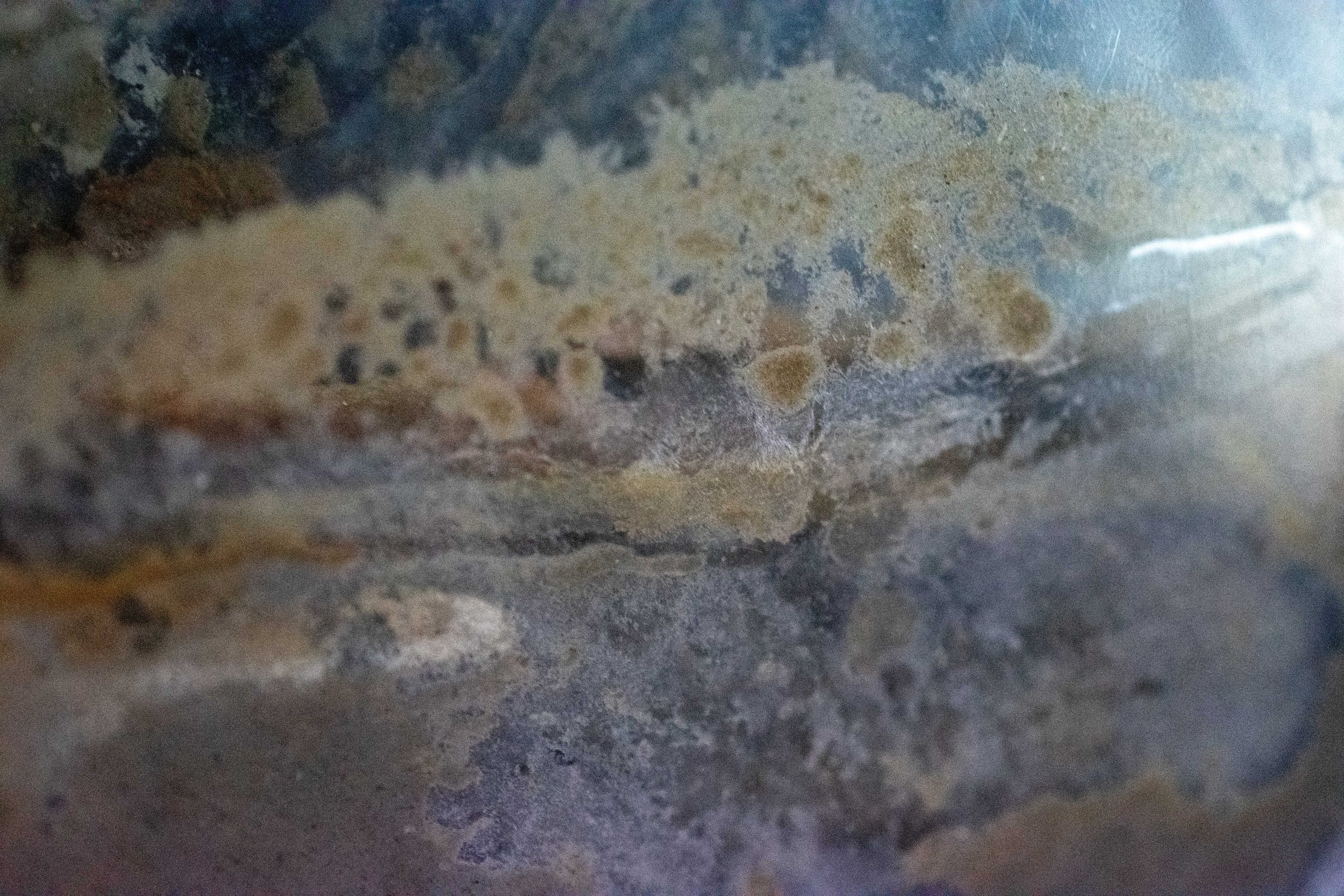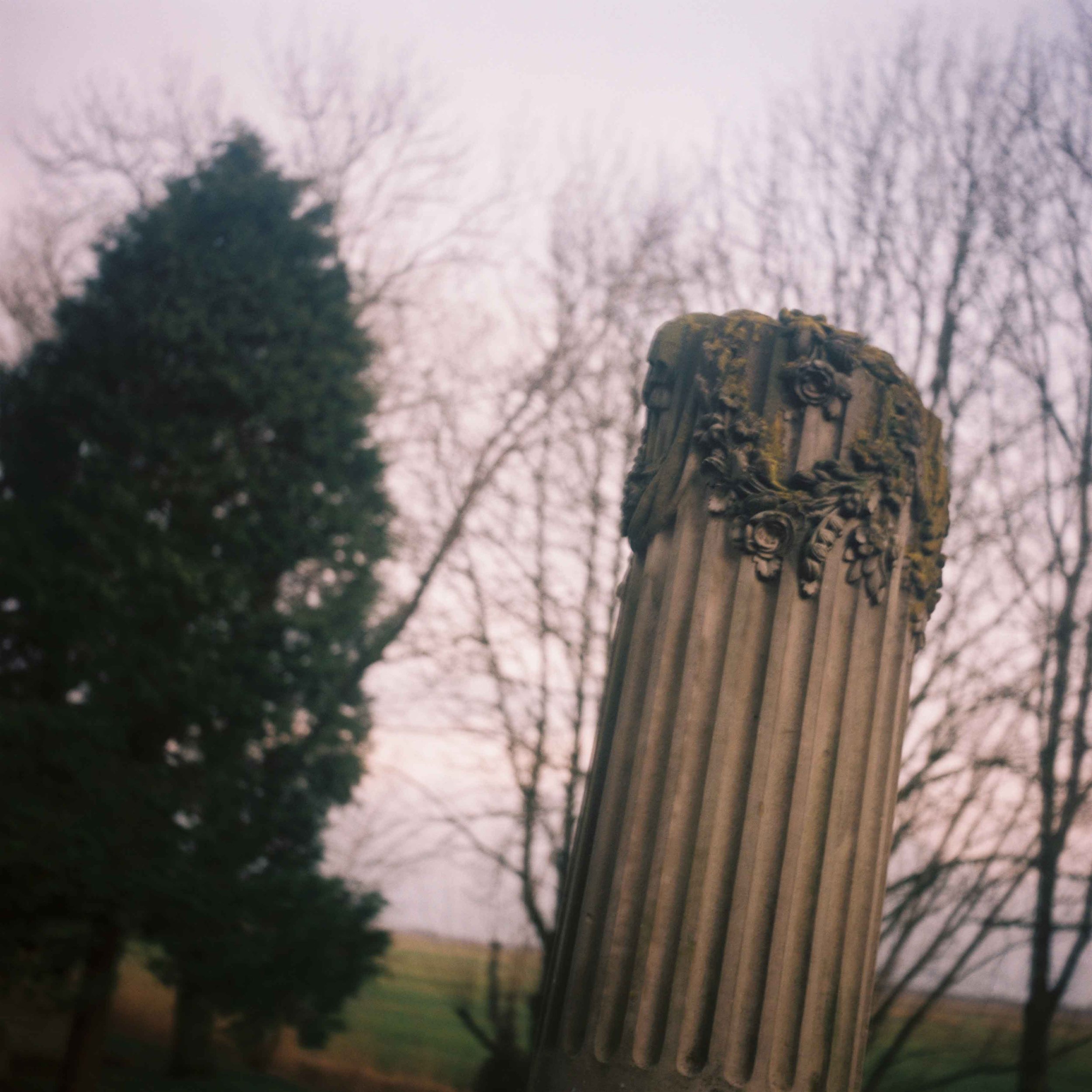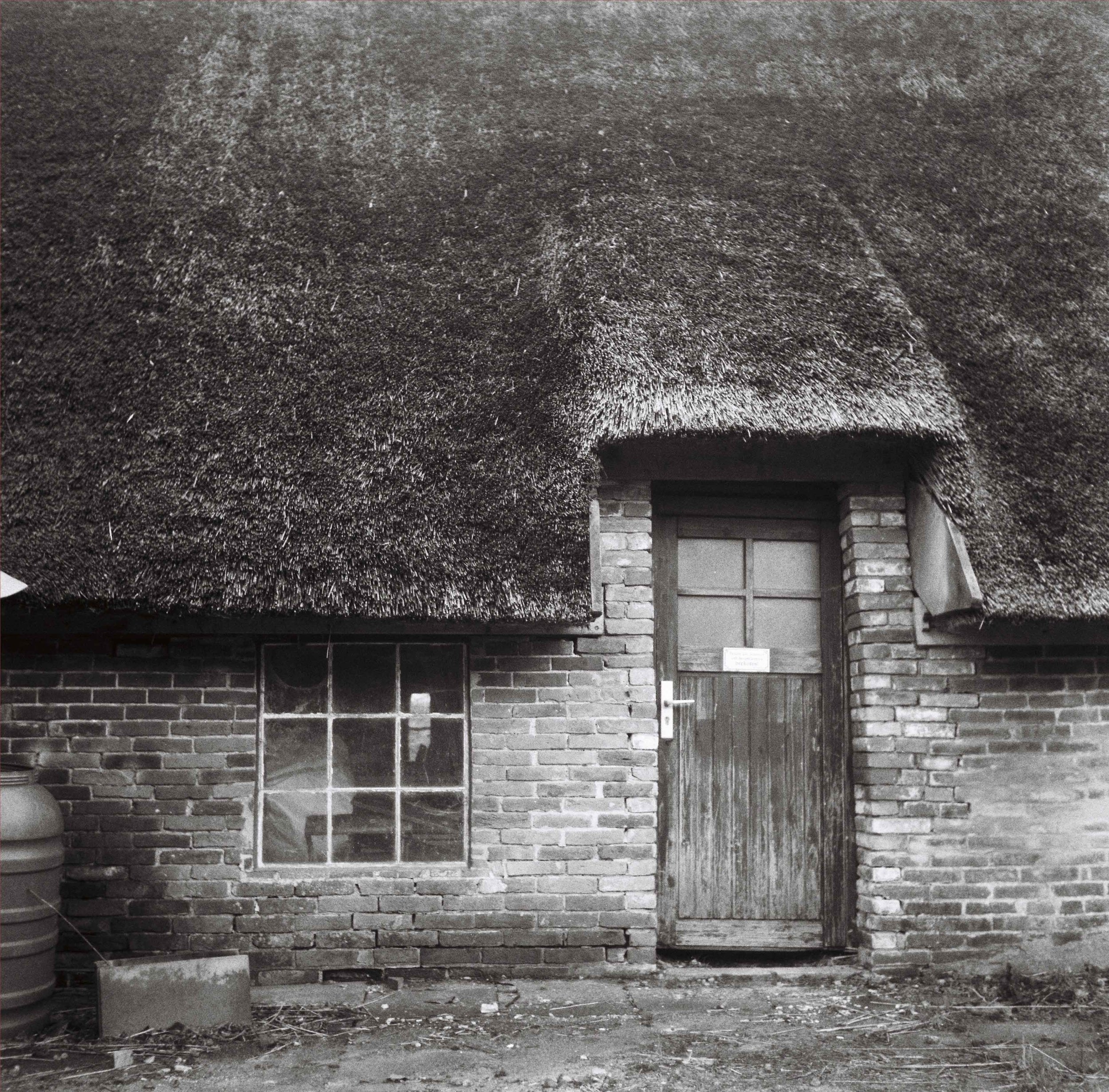A FAMILIAR VEIL
video triptych, 2021-2023
CREATED WITH THE PARTICIPATION OF THE MUSÉUM NATIONAL D’HISTOIRE NATURELLE (PARIS, FRANCE) AND WITH THE SUPPORT OF MAKERY.INFO AND THE REWILDING CULTURES PROGRAM - CO-FUNDED BY THE EUROPEAN UNION.
ALL RIGHTS / TOUS DROITS © ADAGP, 2021-2023
EN: A familiar veil is the title of both a poetic video triptych and a broader three-year project, begun during an art-science residency at the marine biology research station of the Muséum National d’Histoire Naturelle (MNHN- the French National Natural History Museum) in Concarneau, via a collaboration with marine microbiologist Cédric Hubas in February 2022 (Cf. “A familiar veil : Artistic Research page). It then traveled to Kilpisjärvi, Finland, Sandøya, Norway and Strückhausen, Germany: rural landscapes that carry a personal importance for me and my ancestors, both human and more-than-human. In each place, human memories (in the form of text or image) were collected from local residents, and subsequently “revealed” in living photographic form, thanks to the photosensitive microorganisms collected in the same places. In the video triptych, a form of visual poetry is composed from this process of bringing memories back to life, accompanied by the voice recordings of four women from four different generations, who recite their respective memories. Each memory is told in-situ in its landscape of origin: French, Finnish, German or Norwegian. The triptych thus reveals the inextricable connections between different space-times, and the natural phenomena, microbial life forms, and embodied materiality of the memories that inhabit them.
These pieces are on-going, forever works-in-progress.
FR : A familiar veil est à la fois un triptyque vidéo et un projet plus vaste, débuté au cours d’une résidence art-science à la station de biologie marine du Muséum National d’Histoire Naturelle (MNHN) à Concarneau en février 2022 (Cf. “A familiar veil : Artistic Research page). Le projet a commencé sous forme d’une collaboration avec le Professeur en microbiologie marine Cédric Hubas. Il s’est ensuite déplacé à Kilpisjärvi, en Finlande, à Sandøya, en Norvège, et à Strückhausen, en Allemagne : des paysages ruraux qui ont une importance personnelle pour moi et mes ancêtres : humains et plus qu’humains. Dans chaque lieu, des souvenirs humains (sous forme de texte ou d’image) ont été collectés auprès des habitants, puis « révélés » sous forme photographique vivante grâce aux micro-organismes photosensibles prélevés dans ces mêmes lieux. Au sein du triptyque vidéo, une poésie visuelle de ce processus de revivification de la mémoire est accompagnée par les voix de quatre femmes issues de quatre générations différentes, qui racontent leurs souvenirs respectifs. Chaque souvenir est raconté in-situ, dans son paysage d’origine : français, finlandais, allemand ou norvégien. Au sein du triptyque vidéo, ces paysages se retrouvent ainsi reliés entre eux au travers des femmes et des microorganismes photosensibles qui les habitent.
Ces œuvres sont évolutives, et continueront d’être modifiées, à perpétuité.
part 1 : concarneau, france






EN: Views of the video installation of A familiar veil, Part I at the exhibition Circades, Le 6b, Saint-Denis (Paris), France. Curated by Espace fine collective. 15/09- 06/10/2022
FR : Vues de l’installation vidéo de A familiar veil, Part I à l’exposition Circades, Le 6b, Saint-Denis, France. Commissariat : Collectif Espace fine. 15/09- 06/10/2022
EN: Part I - preview, full length : 8:16”
Part I of the video triptych is presented as an immersive installation, and serves as the background for a set of “memory revelation” experiences. It operates as a sentient introduction to the biofilm matrix, and how its materiality evokes the equally complex, evolutive matrix of human memory. It is conceived as a poetic, cyclical composition of words, images and gestures, which reveal my discovery of the capacity of photosensitive biofilms to generate living images and texts in-situ, and the Circadian rhythm dictating their migrations. The second and third parts of the triptych explore the same process, applied to more specific human memories in Norway, Finland and Germany, adding layers to a set of multi-temporal experiences in different microbial-human milieux.
FR : Part I - preview, durée entière : 8:16”
Part I du triptyque vidéo se présente comme une installation immersive et sert du fond de décor des expériences de « révélation de la mémoire ». Elle est une introduction à la découverte sensible du biofilm, et à la manière dont sa matérialité évoque la matrice toute aussi complexe et évolutive de la mémoire humaine. Elle est conçue comme une composition cyclique de mots, images et gestes qui rendent compte des recherches et expériences sur le biofilm, qui émerge et disparaît de la surface de l’eau suivant un rythme circadien de vingt-quatre heures. Ce travail s’intéresse ainsi aux variations qui perturbent ce rythme, mais également au statut de biofilm en tant que créateur d’images. Les deuxième et troisième parties du triptyque explorent le même processus de révélation de la mémoire humaine, située plus précisément dans des paysages norvégiens, finlandais et allemands. La superposition de ces expériences trans-temporales ne cesse de se multiplier.
part II: Kilpisjärvi, finland
EN: Part II takes place in Kilpisjärvi, Finland. My own voice and that of Finnish environmental artist Leena Valkeapää recount two intersecting narratives. The first is a memory of light, told by Leena, who meditates on her experiences of reindeer-herding under the aurora borealis. The second text is my own, also written while in Kilpisjärvi, in response to the visceral connection I felt to this subarctic landscape— a kind of memory told in the process of forming. The footage in the video works mixes various attempts to materialize the immaterial veil of memory, whose presence can be sensed in any landscape, and whose visual form mutates constantly according to the subjective experiences of the viewer, placed both spatially and temporally within that landscape. Throughout the video triptych, I interpret this veil of memory as a living layer that covers everyone and everything: I imagine its materiality as a kind of skin-like substance similar to the sticky, liquid texture of the biofilm matrix. Sometimes, however, this veil of memory takes on the more consistent texture of other living layers that cover the Earth’s surfaces, such as biocrust. In this video work, I also use man-made veils such as transparent fabric, photopolymer film, and other (primarily photosensitive) synthetic materials to repeatedly veil and unveil fragments of the landscape on different scales. My hands are also shown sampling colorful, photosensitive bacteria from the Kitsiputous waterfall in Kilpisjärvi, which I collected via a collaboration with microbiologist Minna Männistö during my first stay at the Kilpisjärvi Biological Station. I then cultivated these bacteria in petri dishes and exposed them to UV light under photographic negatives. The negatives, much like in Part I of the triptych, reveal printed texts and images: fragments of the memories collected from Leena and myself. At the end of the Ars Bioarctica residency in Kilpisjärvi, the contents of the petri dishes were returned to the locations they were taken from, left to decompose.
FR : Part II du triptyque a été réalisé à Kilpisjärvi, Finlande en juin 2022. Ma propre voix et celle de l’artiste environnementale Leena Valkeapää racontent deux histoires entrelacées. La première est un souvenir de lumière, raconté par Leena, de son expérience d’élevage de rennes sous la lumière des aurore boréales. La deuxième est mon propre récit, écrit également à Kilpisjärvi, comme une réponse à la connexion viscérale que je ressentais à ce paysage arctique : un souvenir en cours de construction. Les prises de vue mélangent des tentatives de matérialiser une couche de mémoire vive qui recouvre tout, et dont la forme visuelle se mute en fonction des expériences subjectives du spectateur, placé dans l’espace-temps particulier d’un paysage donné. J’envisage la matérialité de cette voile comme une sorte de peau, semblable à la substance collante, liquide, du biofilm. J’emploie différents matériaux synthétiques comme un tissu transparent ou un film photopolymer afin de voiler et dévoiler des fragments du paysage à différentes échelles. Mes mains apparaissent également dans la vidéo, lorsque je récolte des échantillons de bactéries photosensibles de la chute d’eau de Kitsiputous à Kilpisjärvi étudiées par la microbiologiste Minna Männistö. Après les avoir récoltés, j’ai exposé ces mêmes bactéries contenues au sein des boites de petri à la lumière UV sous des négatifs photographiques. Des textes, images, ou traces des souvenirs de Leena et moi étaient donc imprimés dans les grâce à la rencontre entre les bactéries et la lumière. À la fin du projet, les bactéries étaient rendues aux mêmes sites où elles étaient récoltées.
part iii: strückhausen - sandøya - paris
EN: Part III adds a final layer of memories to be revealed within the biofilm matrix. This last work follows my own three-day journey traveling back through Paris by train to reach Concarneau from Oslo, Norway, where I moved in October 2022. The journey begins a few hours south of Oslo on the island of Sandøya where my aunt, Laurie Vestøl lives. In Sandøya, I serendipitously discovered another photosensitive aquatic biofilm — seemingly identical to the one studied by Cédric Hubas at the marine station in Concarneau— in the shallow waters surrounding the island. During the same visit, my aunt informed me of the existence of my German great grandmother’s archives: poems, songs and letters she wrote throughout her life, some of which were stored in Sandøya. Given the photosensitivity of this newly discovered biofilm in Sandøya, the idea to photographically reveal, or literally bring her texts back to life there, in-situ, thus came about naturally. I chose one text in particular from her archives to reveal: the ballad Das Gewitter (The Thunderstorm), originally written by Gustav Schwab in 1828 and transcribed in my great grandmother’s handwriting at an unknown date during her life. The ballad is based on a true event that took place on June 30, 1828: lightning struck a home, killing four women of four generations— referred to as child, mother, grandmother and ancestor in Schwab’s text. For the video work, I recorded my German friend Nora Assendorp reading Das Gewitter out loud, and transcribed her translation to English. I was struck by the melancholic tone of the ballad, and how it could be interpreted in the context of the ecological crisis: four generations of humanity killed in an instant by a natural phenomena. The incredible fragility and short time scale of human life, even whilst spread across four generations, is made strikingly clear in Schwab’s text.
The discovery of this ballad led me to the final woman whose memory I was to collect and reveal within the biofilm matrix: Françoise Pelet. Naturally, the four women whose memories are revealed in the video triptych are of the four different generations, like the women of Schwab’s ballad: myself - granddaughter (b. 1993), Leena- mother (b. 1964), Françoise- grandmother (b. 1937) and my great grandmother or “ancestor”- Anna Purrnhagen (1900-1993). Each of us, however, was born in a different country and, apart from Anna Purrnhagen and I, are not blood relatives. Françoise recounts her memories of the Liberation of Paris, as a six-year old girl forced to overcome her fear of the Germans. Juxtaposed with my German great grandmother’s transcription of Das Gewitter, and the equally melancholic tone of her letters describing her own childhood growing up in rural northern Germany during World War I, the two stories are woven together across the final two generations of the triptych.
My own hands are also shown in the video sampling photosensitive bacteria from the lichen that colonize the family tomb of my great grandmother’s descendants, in her native village cemetery in Strückhausen. I then use these bacteria to repeat the same photographic revelations performed in Sandøya. The Strückhausen bacteria were cultivated in petri dishes, thus forming a new biofilm, and then exposed to UV light, projecting my great grandmother’s transcriptions of Schwab’s poem directly onto the bacteria from her birthplace. I continued to materially re-interpret this text by re-transcribing my great-grandmother’s handwriting directly into the biofilm growing in the petri dishes. I also made frottages of her texts, rubbing charcoal onto paper pressed onto the Purrnhagen family tomb in Strückhausen. These frottages, which also appear in the video, show an attempt to merge the physical traces of the biocrust growing on the Purrnhagen tomb, and my great-grandmother’s cursive handwriting. Lastly, to complete the cycle, I revealed selected texts from Françoise’s memories within the biofilm of Concarneau, thus completing the project where it began. A filmic superposition of this repetitive photographic revelation process of living memories in all four countries, with all four women's memories, is what constitutes the triptych’s poetic composition.
FR : Part III rajoute une dernière couche de mémoire à révéler au sein de la matrice du biofilm. Cette œuvre suit mon chemin pour rentrer à Concarneau, via Paris, depuis Oslo, Norvège, où j’ai déménagé en octobre 2022. La vidéo commence sur l’île de Sandøya, au sud d’Oslo, habitée par ma tante, Laurie Vestøl. C’est là où j’ai découvert, à tout hasard, un autre biofilm photosensible— vraisemblablement identique à celui étudié par Cédric Hubas à la station marine de Concarneau— dans les vasières entourant l’île. Au cours de cette même visite, ma tante m’a informée qu’elle avait toujours chez elle les archives de mon arrière grand-mère : poèmes, chansons, lettres qu’elle a écrit au cours de sa vie. Étant donné la photosensibilité de ce biofilm de Sandøya qui m’entourait, l’idée de faire revivre ces textes de mon arrière grand-mère m’est venue naturellement. J’ai choisi un texte en particulier de ses archives : la balade Das Gewitter (La tempête), écrite par Gustav Schwab en 1828 et retranscrite par elle à une date inconnue au cours de sa vie. Le sujet de cette balade traite d’un événement réel : la foudre a frappé une maison, tuant en un seul coup quatre femmes de quatre générations : enfant, mère, grand-mère et ancêtre. Pour l’œuvre vidéo, j’ai demandé à une amie allemande, Nora Assendorp, d’enregistrer sa lecture de cette balade et de retranscrire sa traduction en anglais. J’ai été frappée par sa mélancolie et sa pertinence dans le contexte de la crise écologique : quatre générations de l’humanité tuées simultanément par un phénomène naturel. La fragilité et l’échelle du temps extrêmement courte de la vie humaine, même lorsqu’elle s’étale sur plusieurs générations, devient une évidence, une ironie macabre dans le texte de Schwab.
La découverte de cette balade m’a amenée à la dernière femme qui allait offrir un souvenir à révéler dans le biofilm : Françoise Pelet. Naturellement, les quatre femmes dont les souvenirs sont révélés au cours du triptyque vidéo sont issues de quatre générations, tout comme les femmes de la balade de Schwab : moi-même (petite fille, b. 1993), Leena (mère, b. 1964), Françoise (grand-mère, b. 1937) et Anna Purrnhagen (ancêtre, b. 1900). Par contre, chacune d’entre nous est née dans un pays différent et, à part moi et Anna Purrnhagen, ne partagent pas des liens de sang. Françoise raconte son souvenir de la Libération de Paris, en tant que fille de six ans qui s’oblige à vaincre son peur des allemands. Ce souvenir est juxtaposé avec la transcription d’Anna Purrnhagen de la balade Das Gewitter— qui exprime également la mélancolie de son enfance en Allemagne au cours de la première guerre mondiale.
Mes propres mains sont également montrées dans cette dernière vidéo en récoltant des bactéries photosensibles des lichens qui poussaient sur la tombe familiale d’Anna Purrnhagen, dans la cimetière de son village de naissance, Strückhausen. J’ai ensuite cultivé ces bactéries au sein des boites de petri afin de répéter les révélations photographiques faites à Sandøya. Les bactéries de Strückhausen ont formé des nouveaux biofilms dans les boites de petri, qui étaient ensuite exposés à la lumière UV. Les transcriptions d’Anna Purrnhagen, transformées en négatifs photographiques, étaient donc projetées directement sur les bactéries issues de son lieu de naissance. J’ai continué à matériellement réinterpréter ce texte en re-transcrivant son écriture directement dans le biofilm généré par ces bactéries. J’ai également fait des frottages en charbon de ses textes sur la tombe de la famille Purrnhagen à Strückhausen. Ces frottages, qui apparaissent dans la vidéo, montrent une tentative de faire fondre l’un dans l’autre les traces de son écriture et la matrice vivante du biocrust qui poussaient sur sa tombe familiale. Enfin, pour terminer le cycle du triptyque, j’ai répété le processus de révélation du souvenir de Françoise dans le biofilm de Concarneau, afin de terminer le projet là où il a commencé. La superposition filmique de ce processus répétitif de révélation photographique vivante au sein de quatre paysages, avec les souvenirs de quatre femmes, complète le triptyque.













EN: analog photographic series, documentation of A familiar veil, Part III, Sandøya, Norway, 2022-2023
FR : série photographique analogue, documentation de A familiar veil, Part III, Sandøya, Norvège, 2022-2023




EN: analog photographic series, documentation of A familiar veil, Part III, Strückhausen, Germany, 2022-2023
FR : série photographique analogue, documentation de A familiar veil, Part III, Strückhausen, Allemagne, 2022-2023


EN: analog photographic series, documentation of A familiar veil, Part III, Strückhausen, Germany, 2022-2023
FR : série photographique analogue, documentation de A familiar veil, Part III, Strückhausen, Allemagne, 2022-2023



















EN: analog photographic series, documentation of A familiar veil, Part III, Sandøya, Norway, 2022-2023
FR : série photographique analogue, documentation de A familiar veil, Part III, Sandøya, Norvège, 2022-2023